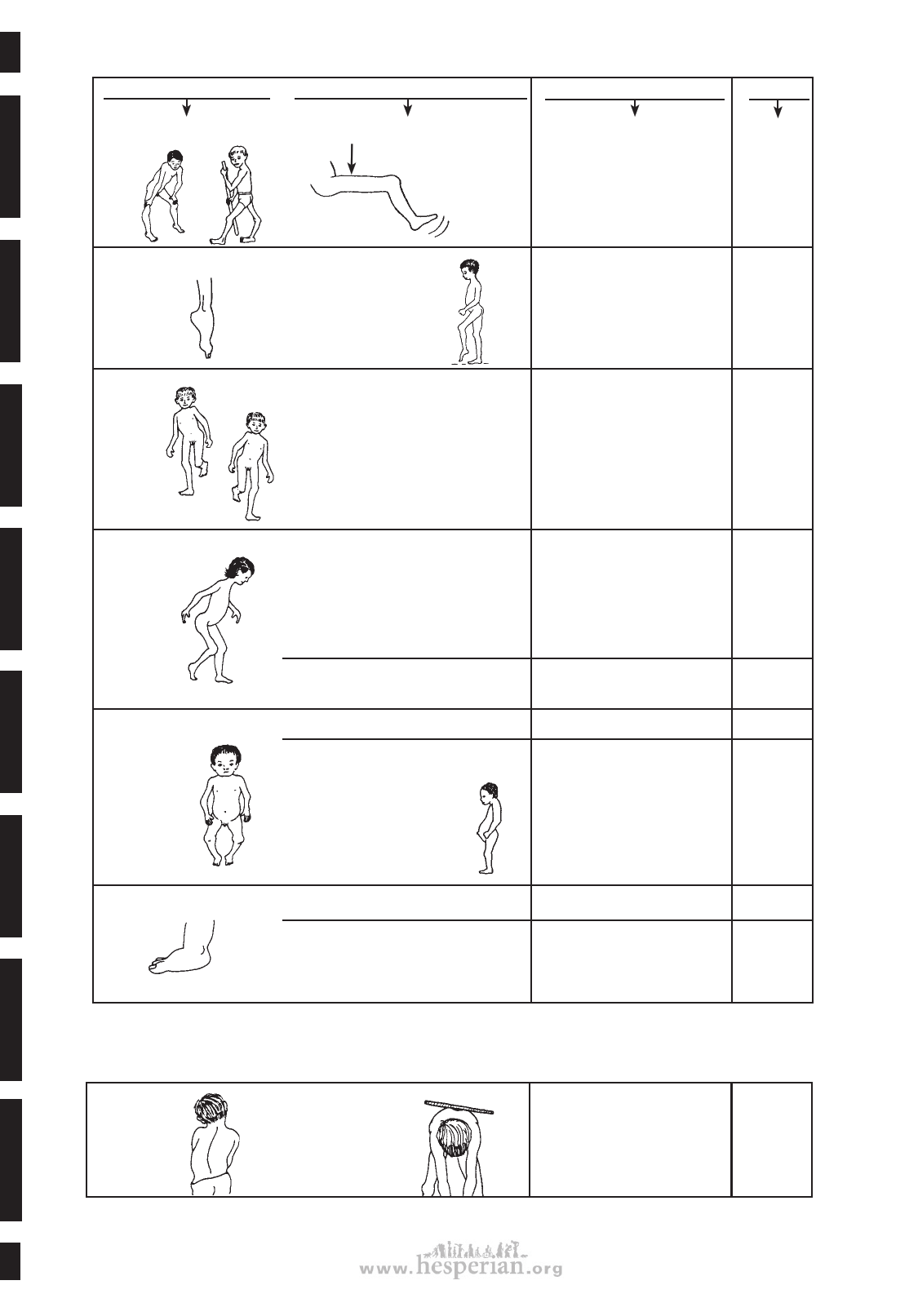
56 chapter 6
IF THE CHILD HAS THIS
walks with hand(s) pushing
thigh(s) or with knee(s) bent
back
AND ALSO THIS
weak thigh muscle
Foot hangs
down weakly
(foot drop).
difficulty
lifting leg
Child lifts foot high
with each step so
that it will not drag.
dips from
side to
side with
each step
due to muscle weakness
at side of hips, or double
dislocated hips, or both
walks with
one (or both)
hip, knee, or
ankle that
stays bent
Knees wide apart
when feet together
(bow legs).
Waddles or dips
from side to side
(if he walks).
flat feet
joints cannot be slowly
straightened when child
relaxes (see page 79).
Joints can gradually be
straightened when child relaxes.
under 18 months old
Any combination of these:
• Joints look big or thick.
• Child is short for age.
• Bones weak, bent, or break
easily.
• Arms and legs may seem
too short for body, or
‘out of proportion’.
• Belly and butt stick out a lot.
no pain or other problems
• Pain may occur in arch of foot.
• Deformity may get worse.
BACK CURVES AND DEFORMITIES
sideways curve
of backbone
When child bends
over, look for a
lump on one side.
HE MAY HAVE
SEE PAGE
• polio
• muscular dystrophy
• arthritis (joint pain)
• other causes of muscle
weakness
• polio
• spina bifida
• muscular dystrophy
• muscular atrophy
• nerve or muscle injury
• other cause opf weakness
• polio
• cerebral palsy
• spina bifida
• Down syndrome
• muscular dystrophy
• child who stays small
• arthrogryposis
• dislocated hips (may occur
with any of the above)
• contractures
•
(shortened muscles)
joined or fused joints
may be secondary to:
• polio
• joint infection
• other causes
spasticity, often
cerebral palsy
often normal
Consider:
• rickets (lack of vitamin D and
sunlight)
• brittle bone disease
• children who stay very short
(dwarfism)
• hypothyroidism
• Down syndrome
• dislocated hips
normal in many children
may be problems in:
••••
cerebral palsy
polio
spina bifida
Down syndrome
59
109
135
112
59
167
109
112
35
139
59
87
167
279
109
126
122
155
77
80
59
131
231
89
113
125
125
126
282
279
155
113
113
87
59
167
279
‘scoliosis’—may occur alone or
•a s
complication
polio
of:
• cerebral palsy
• muscular dystrophy
• spina bifida
• other physical disability
59
87
109
167
162
Disabled village Children